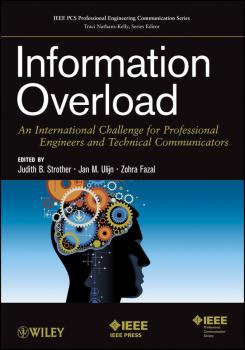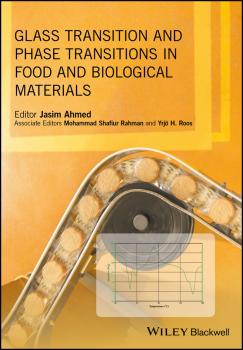Техническая литература
Различные книги в жанре Техническая литератураEmbedded Systems. Analysis and Modeling with SysML, UML and AADL
Since the construction of the first embedded system in the 1960s, embedded systems have continued to spread. They provide a continually increasing number of services and are part of our daily life. The development of these systems is a difficult problem which does not yet have a global solution. Another difficulty is that systems are plunged into the real world, which is not discrete (as is generally understood in computing), but has a richness of behaviors which sometimes hinders the formulation of simplifying assumptions due to their generally autonomous nature and they must face possibly unforeseen situations (incidents, for example), or even situations that lie outside the initial design assumptions. Embedded Systems presents the state of the art of the development of embedded systems and, in particular, concentrates on the modeling and analysis of these systems by looking at “model-driven engineering”, (MDE2): SysML, UML/MARTE and AADL. A case study (based on a pacemaker) is presented which enables the reader to observe how the different aspects of a system are addressed using the different approaches. All three systems are important in that they provide the reader with a global view of their possibilities and demonstrate the contributions of each approach in the different stages of the software lifecycle. Chapters dedicated to analyzing the specification and code generation are also presented. Contents Foreword, Brian R. Larson. Foreword, Dominique Potier. Introduction, Fabrice Kordon, Jérôme Hugues, Agusti Canals and Alain Dohet. Part 1. General Concepts 1. Elements for the Design of Embedded Computer Systems, Fabrice Kordon, Jérôme Hugues, Agusti Canals and Alain Dohet. 2. Case Study: Pacemaker, Fabrice Kordon, Jérôme Hugues, Agusti Canals and Alain Dohet. Part 2. SysML 3. Presentation of SysML Concepts, Jean-Michel Bruel and Pascal Roques. 4. Modeling of the Case Study Using SysML, Loïc Fejoz, Philippe Leblanc and Agusti Canals. 5. Requirements Analysis, Ludovic Apvrille and Pierre De Saqui-Sannes. Part 3. MARTE 6. An Introduction to MARTE Concepts, Sébastien Gérard and François Terrier. 7. Case Study Modeling Using MARTE, Jérôme Delatour and Joël Champeau. 8. Model-Based Analysis, Frederic Boniol, Philippe Dhaussy, Luka Le Roux and Jean-Charles Roger. 9. Model-Based Deployment and Code Generation, Chokri Mraidha, Ansgar Radermacher and Sébastien Gérard. Part 4. AADL 10. Presentation of the AADL Concepts, Jérôme Hugues and Xavier Renault. 11. Case Study Modeling Using AADL, Etienne Borde. 12. Model-Based Analysis, Thomas Robert and Jérôme Hugues. 13. Model-Based Code Generation, Laurent Pautet and Béchir Zalila. About the Authors Fabrice Kordon is Professor at University Pierre and Marie Curie in Paris, France, where he is in charge of the team “Modélisation et vérification” of the LIP6. His research field is at the crossroads of distributed systems, software engineering and formal methods. Jérôme Hugues is lecturer-researcher at the Institut Supérieur de l’Aéronautique et de l’Espace (ISAE) in Toulouse, France and has been a member of the language standardization committee (AADL) since 2006. His research fields cover the engineering of embedded systems and the generation of automatic code of these systems from modeling languages, integrating verification and analysis tools on the model and code level. Agusti Canals is a software engineer and has worked at CS “Communication et Systèmes” in Paris, France since 1981. He is deputy director of the “Direction de la Qualité et des Audits Technique
Wave Technology in Mechanical Engineering. Industrial Applications of Wave and Oscillation Phenomena
This groundbreaking volume covers the significant advantages of wave technologies in the development of innovative machine building where high technologies with appreciable economic effect are applied. These technologies cover many industries, including the oil-and-gas industry, refining and other chemical processing, petrochemical industry, production of new materials, composite and nano-composites including, construction equipment, environmental protection, pharmacology, power generation, and many others. The technological problem of grinding, fine-scale grinding and activation of solid particles (dry blends) is disclosed. This task is common for the production of new materials across these various industries. At present in this sphere the traditional methods have reached their limits and in some cases are economically ineffective from both scientific and practical points of view. The authors have detailed, through their extensive groundbreaking research, how these new methods, based on wave technology, can be used to create new, more efficient and less expensive applications and materials for industry. From increasing oil recovery to building stronger machines more efficiently and creating more productive membrane separation devices, wave technology can be used as a fertile ground for product innovation and more efficient methods of production across a variety of industries. This book is the only one of its kind in the world and offers a unique and invaluable glance into this sophisticated and complicated scientific area that is only now being more fully utilized for its valuable benefits.
Information Overload. An International Challenge for Professional Engineers and Technical Communicators
This book covers the ever-increasing problem of information overload from both the professional and academic perspectives. Focusing on the needs of practicing engineers and professional communicators, it addresses the causes and costs of information overload, along with strategies and techniques for reducing and minimizing its negative effects. The theoretical framework of information overload and ideas for future research are also presented. The book brings together an international group of authors, providing a truly global point of view on this important, rarely covered topic.
Glass Transition and Phase Transitions in Food and Biological Materials
Glass and State Transitions in Food and Biological Materials describes how glass transition has been applied to food micro-structure, food processing, product development, storage studies, packaging development and other areas. This book has been structured so that readers can initially grasp the basic principles and instrumentation, before moving through the various applications. In summary, the book will provide the “missing link” between food science and material science/polymer engineering. This will allow food scientists to better understand the concept and applications of thermal properties.
Multiphase Reactor Engineering for Clean and Low-Carbon Energy Applications
Provides a comprehensive review on the brand-new development of several multiphase reactor techniques applied in energy-related processes Explains the fundamentals of multiphase reactors as well as the sophisticated applications Helps the reader to understand the key problems and solutions of clean coal conversion techniques Details the emerging processes for novel refining technology, clean coal conversion techniques, low-cost hydrogen productions and CO2 capture and storage Introduces current energy-related processes and links the basic principles of emerging processes to the features of multiphase reactors providing an overview of energy conversion in combination with multiphase reactor engineering Includes case studies of novel reactors to illustrate the special features of these reactors
Advances in Battery Manufacturing, Service, and Management Systems
Addresses the methodology and theoretical foundation of battery manufacturing, service and management systems (BM2S2), and discusses the issues and challenges in these areas This book brings together experts in the field to highlight the cutting edge research advances in BM2S2 and to promote an innovative integrated research framework responding to the challenges. There are three major parts included in this book: manufacturing, service, and management. The first part focuses on battery manufacturing systems, including modeling, analysis, design and control, as well as economic and risk analyses. The second part focuses on information technology’s impact on service systems, such as data-driven reliability modeling, failure prognosis, and service decision making methodologies for battery services. The third part addresses battery management systems (BMS) for control and optimization of battery cells, operations, and hybrid storage systems to ensure overall performance and safety, as well as EV management. The contributors consist of experts from universities, industry research centers, and government agency. In addition, this book: Provides comprehensive overviews of lithium-ion battery and battery electrical vehicle manufacturing, as well as economic returns and government support Introduces integrated models for quality propagation and productivity improvement, as well as indicators for bottleneck identification and mitigation in battery manufacturing Covers models and diagnosis algorithms for battery SOC and SOH estimation, data-driven prognosis algorithms for predicting the remaining useful life (RUL) of battery SOC and SOH Presents mathematical models and novel structure of battery equalizers in battery management systems (BMS) Reviews the state of the art of battery, supercapacitor, and battery-supercapacitor hybrid energy storage systems (HESSs) for advanced electric vehicle applications Advances in Battery Manufacturing, Services, and Management Systems is written for researchers and engineers working on battery manufacturing, service, operations, logistics, and management. It can also serve as a reference for senior undergraduate and graduate students interested in BM2S2.
Grid-Integrated and Standalone Photovoltaic Distributed Generation Systems. Analysis, Design, and Control
A practical and systematic elaboration on the analysis, design and control of grid integrated and standalone distributed photovoltaic (PV) generation systems, with Matlab and Simulink models Analyses control of distribution networks with high penetration of PV systems and standalone microgrids with PV systems Covers in detail PV accommodation techniques including energy storage, demand side management and PV output power regulation Features examples of real projects/systems given in OPENDSS codes and/or Matlab and Simulink models Provides a concise summary of up-to-date research around the word in distributed PV systems
Advanced Structural Damage Detection. From Theory to Engineering Applications
Structural Health Monitoring (SHM) is the interdisciplinary engineering field devoted to the monitoring and assessment of structural health and integrity. SHM technology integrates non-destructive evaluation techniques using remote sensing and smart materials to create smart self-monitoring structures characterized by increased reliability and long life. Its applications are primarily systems with critical demands concerning performance where classical onsite assessment is both difficult and expensive. Advanced Structural Damage Detection: From Theory to Engineering Applications is written by academic experts in the field and provides students, engineers and other technical specialists with a comprehensive review of recent developments in various monitoring techniques and their applications to SHM. Contributing to an area which is the subject of intensive research and development, this book offers both theoretical principles and feasibility studies for a number of SHM techniques. Key features: Takes a multidisciplinary approach and provides a comprehensive review of main SHM techniques Presents real case studies and practical application of techniques for damage detection in different types of structures Presents a number of new/novel data processing algorithms Demonstrates real operating prototypes Advanced Structural Damage Detection: From Theory to Engineering Applications is a comprehensive reference for researchers and engineers and is a useful source of information for graduate students in mechanical and civil engineering
Projects Without Boundaries. Successfully Leading Teams and Managing Projects in a Virtual World
Clear, proven solutions for virtual project management challenges Projects Without Boundaries offers project managers a clear framework for bringing both project management practices and project team leadership principles to the virtual space. Written by a team of authors with years of experience managing nationally and internationally distributed teams, this book provides a suite of best practices, checklists, and actionable strategies for managing a project and building a high-performing team in a virtual and multicultural environment. Real-world examples illustrate the application of the concepts discussed, and the Virtual Project Readiness Assessment facilitates both team evaluation and transformation planning for virtual project management improvement. Each chapter focuses on the critical challenges encountered while managing virtual projects and details proven solutions that improve a virtual organization, boost project performance, and facilitate positive outcomes. Globalization and technological advances have merged to create dynamic, productive teams that work together from around the globe; this opportunity can bring great difficulty for project managers, who must negotiate hurdles that do not exist on traditional projects. This book provides ready-made solutions specific to distributed and multicultural teams, to help you achieve the full potential of the global talent pool. Overcome common challenges of virtual projects with distributed teams Navigate complex team dynamics to ensure effective collaboration Work seamlessly across borders, time zones, and cultures Determine optimal virtual communication and collaboration tools Apply traditional project management practices in a virtual setting A team fails or thrives on the strength of its management. Fitting the group's needs, expectations, personalities, and skills into a cohesive whole is seldom simple – and distance adds an additional layer of complexity. Projects Without Boundaries provides expert guidance on keeping it together, with proven practices, tools, and virtual team leadership strategies.
Soil Strength and Slope Stability
The definitive guide to the critical issue of slope stability and safety Soil Strength and Slope Stability, Second Edition presents the latest thinking and techniques in the assessment of natural and man-made slopes, and the factors that cause them to survive or crumble. Using clear, concise language and practical examples, the book explains the practical aspects of geotechnical engineering as applied to slopes and embankments. The new second edition includes a thorough discussion on the use of analysis software, providing the background to understand what the software is doing, along with several methods of manual analysis that allow readers to verify software results. The book also includes a new case study about Hurricane Katrina failures at 17th Street and London Avenue Canal, plus additional case studies that frame the principles and techniques described. Slope stability is a critical element of geotechnical engineering, involved in virtually every civil engineering project, especially highway development. Soil Strength and Slope Stability fills the gap in industry literature by providing practical information on the subject without including extraneous theory that may distract from the application. This balanced approach provides clear guidance for professionals in the field, while remaining comprehensive enough for use as a graduate-level text. Topics include: Mechanics of soil and limit equilibrium procedures Analyzing slope stability, rapid drawdown, and partial consolidation Safety, reliability, and stability analyses Reinforced slopes, stabilization, and repair The book also describes examples and causes of slope failure and stability conditions for analysis, and includes an appendix of slope stability charts. Given how vital slope stability is to public safety, a comprehensive resource for analysis and practical action is a valuable tool. Soil Strength and Slope Stability is the definitive guide to the subject, proving useful both in the classroom and in the field.









